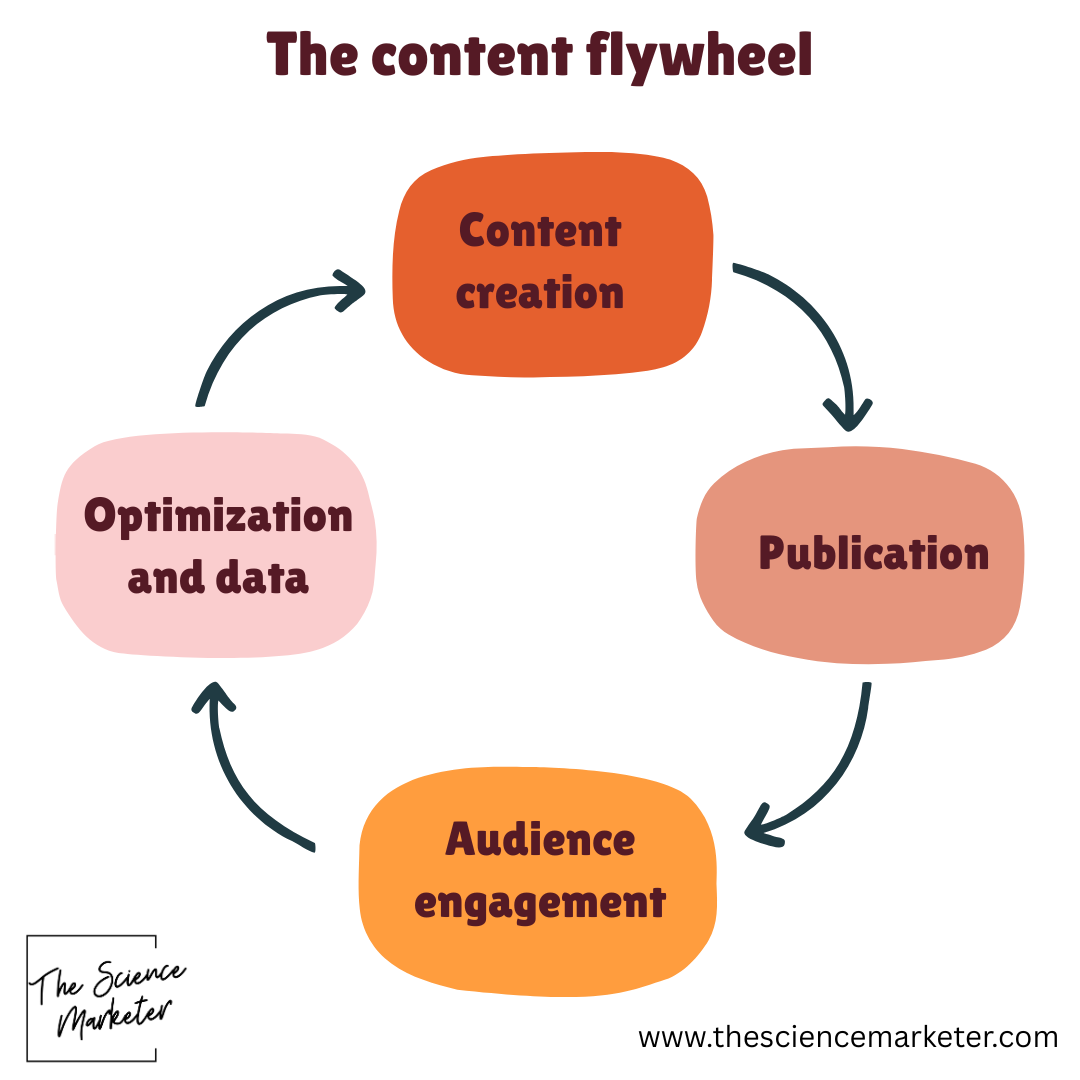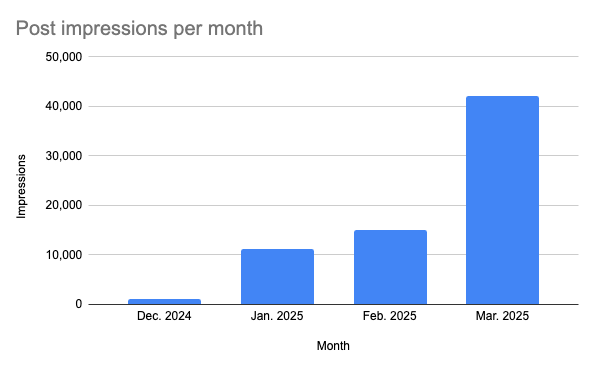Most scientific companies invest significant time, energy, and budget into creating high-quality content, like whitepapers filled with new data, webinars packed with expert discussions, carefully crafted case studies, and technical blog posts full of valuable insights. But all too often, these resources get published once, shared briefly, and then left to collect digital dust.
LinkedIn offers a unique and underused opportunity to give that old content new life. With the right approach, you can repackage your existing materials into engaging posts that will bring a fresh wave of visibility, without having to start from scratch.
But before we start to dive into practical advice, let’s quickly explore why you should repurpose your content.
The strategic importance of repurposing content
The problem most marketing teams face when they establish their content strategy is to think of a piece of content as a one-time project: publish it, promote it, and move on to the next thing. But in reality, the value of good scientific content extends far beyond the initial launch.
As we’ll explore below, a single piece of content can be hacked into smaller pieces, updated, merged with another piece, or simply repackaged in a different format (like going from text to video). With this concept, it’s easy to create a content flywheel:

The key to the flywheel is repurposing, which acts as a new content creation step in the cycle. The advantage is that with each iteration of the content, you've gained the experience of publishing it and exposing it to a real audience, which generates useful data for optimization.
Here are other reasons why repurposing matters:
- Maximize ROI: You’ve already invested time and resources into your content. Repurposing lets you extract more value without starting from scratch. It’s a great way to maximize a tight marketing budget.
- Reach new audiences: Sorry to break it to you, but not everyone saw the original piece of content you published. Repurposing gives your content multiple chances to be discovered.
- Adapt to different formats: Some people prefer visuals, others like text. Repurposing lets you tailor content to how people actually consume it on LinkedIn. For example, there is no reason for a webinar to be set in its current form. Repurposing it also means finding new ways to share the same insights.
- Fill your content calendar: Repurposing ensures you always have something relevant to share, without scrambling to create something new each week. For example, if you're planning to publish a white paper next month, you can schedule 5-10 LinkedIn posts from the same piece of content, quickly filling your calendar.
Convince? Let's now look at 10 practical ways to repurpose scientific content specifically for LinkedIn.
1. Create a LinkedIn carousel from a report or whitepaper
Carousels are one of the most effective LinkedIn formats right now for driving engagement. They allow users to swipe through slides, which increases time spent on your post and improves visibility in the feed. For science marketers, it’s a great format because you can easily pack complex information in a visually appealing way.
If you don’t know where to start, take a dense scientific document—like a whitepaper, annual report, or internal slide deck—and transform it into a scrollable LinkedIn carousel.
Here are some more tips:
- Slide 1 should feature a compelling hook, like a bold statement, surprising stats, or a provocative question.
- Use around 12 slides, it’s been proven to be the best length.
- Keep it clean, it should be easy to read without having to zoom in, even on mobile.
- End with a CTA that invites readers to comment, visit a landing page, or download the full report.
Carousels are a great way to simplify complexity and boost reach. Keep text minimal, and focus on the takeaway per slide.
2. Turn a scientific paper into a series of LinkedIn posts
Scientific papers can be intimidating to non-academics, but they contain a wealth of content that can be unpacked over time.
Here are some examples to inspire you:
- Pick one main insight or conclusion and write a plain-language post explaining it in simple terms. Make sure to highlight the broader context of the research and “why it matters” to your audience.
- Pull out one compelling figure or data point and turn it into a visual post with commentary. If the data can be transformed into infographics, it’s even better, but make sure that it’s easy to read and not packed with text.
- Highlight a surprising method or experimental design and explain why it was effective or innovative. If you can show some photos/videos of the experiment or the material used, this can be even better.
Apply this to your papers and you’ll easily generate a series of posts, all related to each other but also all independently valuable on their own. Spread the publication over time, and this will fill in a few weeks’ worth of content.
3. Turn a webinar into a content generator
If your team hosted a webinar, you’re sitting on a rich source of LinkedIn content.
Here's how to extract value:
- Create quote graphics featuring key statements from speakers
- Clip 20–60 second video segments and add subtitles
- Write short summary posts focused on one insight per post
You can turn a single hour-long webinar into 5–10 posts spread over several weeks, each tailored to different pain points or audience interests.
I’m sure you’ve already sunk dozens of hours into making your webinar a reality, so it would be a waste to abandon it once and for all, when it can easily be repurposed.
4. Reframe blog posts as thought leadership
Your blog might already contain brilliant ideas that just need reframing. Pull a key insight or argument and turn it into a personal post for your executives:
- Share it as a reflection: "One thing I’ve learned working on X is..."
- Add a brief anecdote or real-world application
- Invite your network to share their experience
Remember that personal profiles perform much better than company pages on LinkedIn. Including your executive team in your LinkedIn content strategy is a must-have to ensure strong brand awareness.
Make their life easy by providing the content they can share on their profile, all without having to recreate what’s already been done.
I started applying this technique with a client of mine, and the result was almost immediate:

5. Re-share top-performing posts with a new angle
Once you start injecting your old content into your calendar, you’ll rapidly be able to publish regularly. What’s best about repurposing is that it’s not only meant to be for content outside of LinkedIn, but also for the content you’ve already published on the platform.
Go to your LinkedIn analytics and find your top-performing posts from the past 6–12 months. Don’t just repost, but remix it instead:
- If there is data, update it with new info
- Change the format (e.g., go from a text post to a carousel)
- Tie it to a trending topic or an upcoming event.
Remember, even if a post did well, there is a vast audience that hasn’t seen it. Don’t be afraid of repeating yourself, it’s actually one of the keys to being heard online.
6. Highlight a teammate
You probably announce new hires on your LinkedIn company page (everyone does). That's great, but what about talking about them a year later?
Marketers often think about celebrating a new hire, but less about celebrating their work anniversary.
That's a huge oversight, because a lot happens in a year and people have a lot of personal experiences to share. Sit down with them and figure out a good story to tell your audience.
It’s not the kind of repurposing we usually think about, but it’s still worth a try.
7. Share "Top 3 lessons" from past work
Take an old project, like a case study, an application note or a paper, and reflect on what your team learned while working on it:
- What worked?
- What didn’t?
- What would you do differently next time?
Then package it as a “Top 3 lessons” post. Here, I’m really talking about the scientific work behind the content, so think about something like "3 lessons from our clinical trial experience" or "3 things we wish we knew before launching our diagnostic tool.”
This is a great way of sharing a behind-the-scenes look at your company, and at the same time, bringing value to your audience.
8. Turn Q&A into Standalone Posts
If you've hosted webinars or conference talks, be really attentive to the questions you’re being asked.
These are perfect for repurposing:
- Pick one question per post
- Rephrase it as a headline or challenge
- Share your answer in 3–5 sentences
This format is audience-driven and builds credibility by addressing real pain points. One webinar could easily generate 5 to 10 posts, so it’s really worth keeping an eye on questions (the same can be applied to frequent requests you receive from customers).
Repurposing isn’t recycling. To me, it’s about reactivating valuable content that’s still relevant. Most scientific companies already have a goldmine of material in their archives and still struggle to publish new insights.
With a repurposing mindset, you can turn that content into a steady stream of fresh, engaging posts that boost visibility, spark conversation, and support your business goals. Give it a try!






